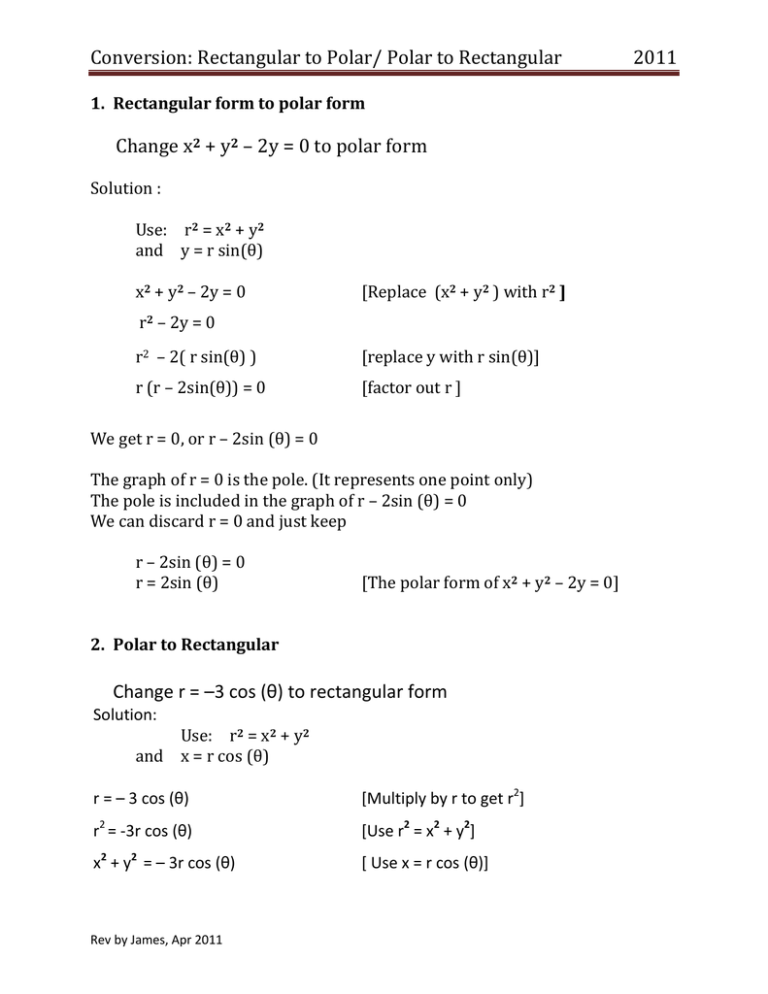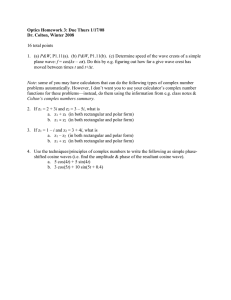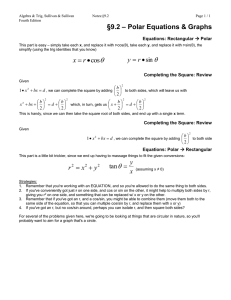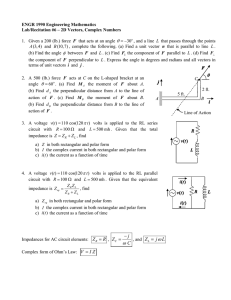Conversion: Rectangular to Polar/ Polar to Rectangular 2011
advertisement

Conversion: Rectangular to Polar/ Polar to Rectangular 1. Rectangular form to polar form Change x2 + y2 – 2y = 0 to polar form Solution : Use: r2 = x2 + y2 and y = r sin(θ) x2 + y2 – 2y = 0 [Replace (x2 + y2 ) with r2 ] r2 – 2y = 0 r2 – 2( r sin(θ) ) [replace y with r sin(θ)] r (r – 2sin(θ)) = 0 [factor out r ] We get r = 0, or r – 2sin (θ) = 0 The graph of r = 0 is the pole. (It represents one point only) The pole is included in the graph of r – 2sin (θ) = 0 We can discard r = 0 and just keep r – 2sin (θ) = 0 r = 2sin (θ) [The polar form of x2 + y2 – 2y = 0] 2. Polar to Rectangular Change r = –3 cos (θ) to rectangular form Solution: Use: r2 = x2 + y2 and x = r cos (θ) r = – 3 cos (θ) [Multiply by r to get r2] r2 = -3r cos (θ) [Use r2 = x2 + y2] x2 + y2 = – 3r cos (θ) [ Use x = r cos (θ)] Rev by James, Apr 2011 2011 Conversion: Rectangular to Polar/ Polar to Rectangular x2 + y2 + 3x = 0 [Rectangular form ] (x2 + 3x) + y2 = 0 reorganize in x2 + y2 = r2 ( x2 + 3x + [complete the square] )+ y2 = 0 + (x + )2 + y2 = 2011 [rectangular form] Ex: given point = 4 at 30degree. Convert to rectangular: y = r sin(θ), x = r cos(θ) so [x, y] = [4cos(30), 4sin(30)] = [2 , 2] In general: Use: and either or r2 = x 2 + y 2 y = r sin(θ) (when y is the term used in the original equation) x = r cos(θ) (when x is the term used in the original equation) Sometimes it is helpful to multiply the whole equation times r as a first step, as seen above. If you end up with r = “some value”, the plot of this is just a circle with r radius. Rev by James, Apr 2011


